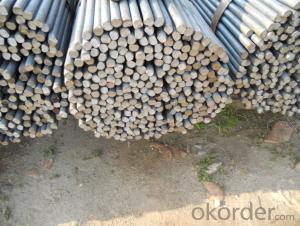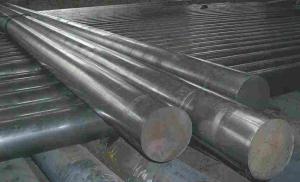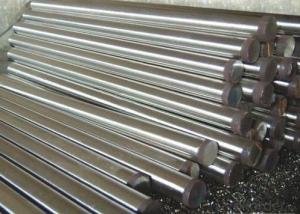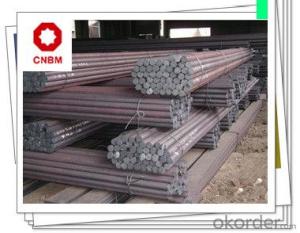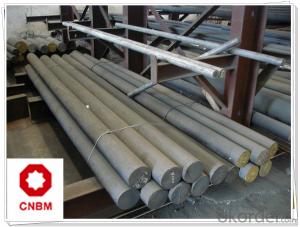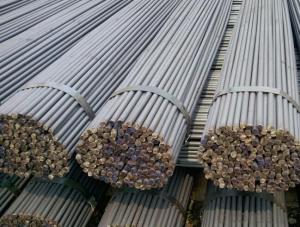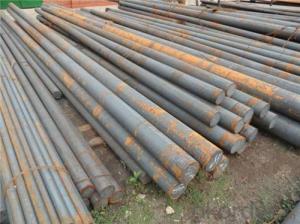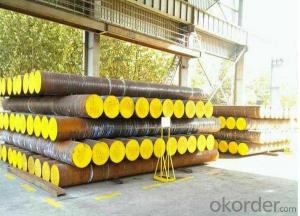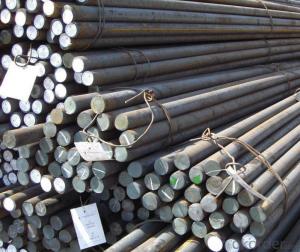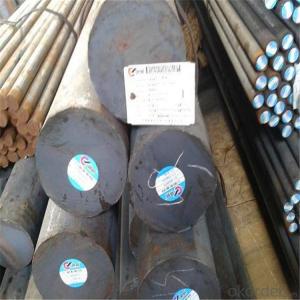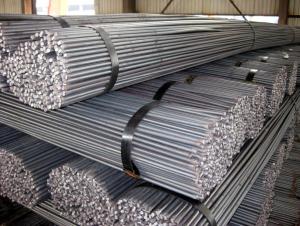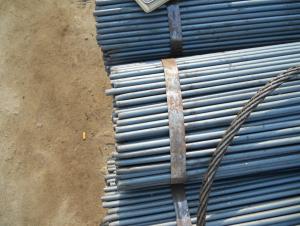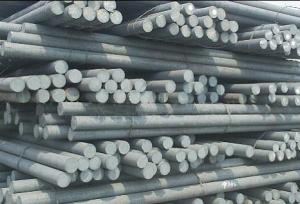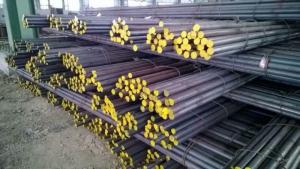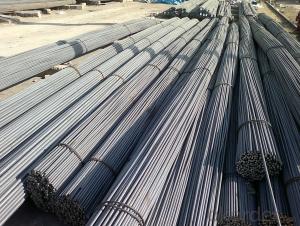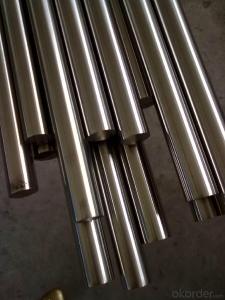Gear Steel Round Bars SCM420H SCM440H SCr420H 20MnCr5
- Loading Port:
- Tianjin
- Payment Terms:
- TT OR LC
- Min Order Qty:
- 100 m.t.
- Supply Capability:
- 50000 m.t./month
OKorder Service Pledge
OKorder Financial Service
You Might Also Like
Specification
Gear Steel Round Bars SCM420H SCM440H SCr420H 20MnCr5
Product Description of Gear Steel Round Bars SCM420H SCM440H SCr420H 20MnCr5
1. Steel grade: 20MnCr5
2. Length: 6M-12M
3. Diameter: 16mm-300mm
4. Product range: round bar, flat bar, square bar
5. Technique: Hot rolled, forged, cold drawn
Specification of Gear Steel Round Bars SCM420H SCM440H SCr420H 20MnCr5
Material | 20CrMnTi | Round bar | Dia(mm) | 16-300mm |
Process | EAF + LF + VD + Forged + Heat Treatment (optional) | Length (mm) | Max 12m | |
Heat treatment | Normalized / Annealed / Quenched / tempered | Flat bar | Thickness(mm) | 8-500mm |
Delivery condition | Hot forged +Rough machined (black surface after Q/T)+ Turned (optional) | Width(mm) | 70-200mm | |
Test | Ultrasonic test according to SEP 1921-84 D/d | Length (mm) | Max 12m |
Chemical Composition of Gear Steel Round Bars SCM420H SCM440H SCr420H 20MnCr5
C | Si | Mn | Cr | Ni | Cu |
0.42~0.47 | 0.17~0.37 | 0.35~0.65 | ≤0.25 | ≤0.30 | ≤0.25 |
Photo Show of Gear Steel Round Bars SCM420H SCM440H SCr420H 20MnCr5
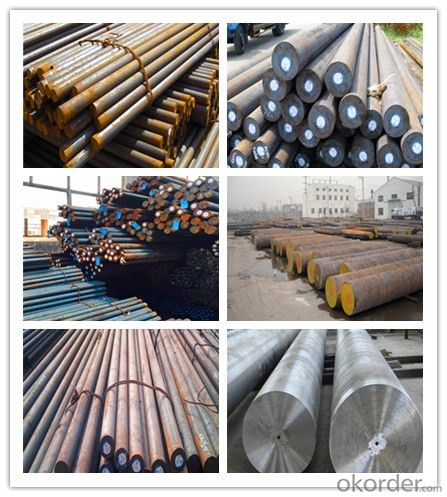
Packing and Delivery:
Packing in bundle package, or as customer's requirements.
Delivery Detail: 45 days after receiving the deposit.
Usage and Applications of Gear Steel Round Bars SCM420H SCM440H SCr420H 20MnCr5
1. Steel round bar is used in a large number of architectural and engineering structures. Or it can be used in construction of plants for the production of steel house frames, high-voltage transmission towers, bridges, vehicles, boilers, containers, ships, etc.
2. And we can use this kind of product on the performance of the mechanical parts if the demand is not very high.
3. Some special material steel round bar can be used for main shaft of steamer, hummer shank, with big section and supper force.
Company Information
CNBM International Corporation is the most important trading platform of CNBM group.
Whith its advantages, CNBM International are mainly concentrate on Cement, Glass, Iron and Steel, Ceramics industries and devotes herself for supplying high qulity series of refractories as well as technical consultancies and logistics solutions.


F A Q
1, Your advantages?
professional products inquiry, products knowledge train (for agents), smooth goods delivery, excellent customer solution proposale
2, Test & Certificate?
SGS test is available, customer inspection before shipping is welcome, third party inspection is no problem
3, Factory or Trading Company?
CNBM is a trading company but we have so many protocol factories and CNBM works as a trading department of these factories. Also CNBM is the holding company of many factories.
4, Payment Terms?
30% TT as deposit and 70% before delivery.
Irrevocable L/C at sight.
5, Trading Terms?
EXW, FOB, CIF, FFR, CNF
6, After-sale Service?
CNBM provides the services and support you need for every step of our cooperation. We're the business partner you can trust.
For any problem, please kindly contact us at any your convenient time.
We'll reply you in our first priority within 24 hours.
- Q: What is the difference between a polished and a cold drawn steel round bar?
- A polished steel round bar refers to a steel bar that has undergone a polishing process, which involves using abrasive materials to remove any surface imperfections and create a smooth, shiny finish. Polishing enhances the aesthetic appearance of the steel bar and improves its corrosion resistance. This process is commonly used for decorative or architectural applications where the visual appeal is important. On the other hand, a cold drawn steel round bar is produced through a different manufacturing process. In this method, a steel bar is pulled through a die at room temperature to reduce its diameter and increase its length. This process results in a bar with a more precise and uniform diameter, as well as improved mechanical properties such as higher tensile strength and dimensional accuracy. Cold drawing also enhances the surface finish, but it may not achieve the same level of smoothness and shine as a polished bar. In summary, the main difference between a polished and a cold drawn steel round bar lies in the manufacturing process and the resulting properties. Polishing provides a smooth and shiny finish for aesthetic purposes, while cold drawing improves the dimensional accuracy and mechanical properties of the steel bar.
- Q: What are the advantages of using chromium-molybdenum alloy steel round bars?
- There are several advantages of using chromium-molybdenum alloy steel round bars: 1. High Strength: Chromium-molybdenum alloy steel round bars have excellent strength properties, making them suitable for applications that require a high level of strength and durability. This makes them ideal for use in heavy machinery, construction equipment, and other demanding applications. 2. Corrosion Resistance: The addition of chromium in the alloy steel composition enhances its corrosion resistance properties. This makes chromium-molybdenum alloy steel round bars highly resistant to rust and other forms of corrosion, making them suitable for use in harsh environments and outdoor applications. 3. Heat Resistance: Chromium-molybdenum alloy steel round bars have excellent heat resistance properties, allowing them to withstand high temperatures without losing their structural integrity. This makes them suitable for use in applications that involve high temperature conditions, such as in boilers, pressure vessels, and heat exchangers. 4. Wear Resistance: The presence of molybdenum in the alloy steel composition provides excellent wear resistance properties. This means that chromium-molybdenum alloy steel round bars can withstand the effects of wear and abrasion, making them suitable for use in applications that involve high levels of friction and wear, such as in mining equipment, drilling tools, and automotive components. 5. Machinability: Chromium-molybdenum alloy steel round bars have good machinability, allowing them to be easily shaped and formed into various configurations. This makes them suitable for use in applications that require complex shapes and designs, such as in automotive parts, machine components, and tooling. Overall, the advantages of using chromium-molybdenum alloy steel round bars make them a popular choice for a wide range of applications in various industries. They offer high strength, corrosion resistance, heat resistance, wear resistance, and good machinability, making them a reliable and versatile material for many demanding applications.
- Q: How do you measure the length of a steel round bar?
- To measure the length of a steel round bar, you will need a measuring tool called a tape measure or a ruler. First, ensure that the bar is placed on a flat surface. Then, align the zero mark of the tape measure or ruler with one end of the bar. Hold the measuring tool steadily against the bar and extend it along the entire length until you reach the opposite end. Take note of the measurement displayed on the tape measure or ruler at the point where the other end of the bar aligns. This measurement is the length of the steel round bar.
- Q: How do steel round bars contribute to sustainable construction?
- Steel round bars contribute to sustainable construction in several ways. Firstly, steel is a highly durable and long-lasting material. Steel round bars are known for their strength and resilience, which allows them to withstand heavy loads and extreme weather conditions. This durability ensures that structures built with steel round bars have a longer lifespan, reducing the need for frequent repairs or replacements. This not only saves money but also reduces the environmental impact associated with the production and disposal of construction materials. Additionally, steel is a highly recyclable material. When a structure reaches the end of its life cycle, the steel round bars can be easily and efficiently recycled. This reduces the demand for virgin steel production, which is an energy-intensive and environmentally harmful process. Recycling steel also helps to reduce waste in landfills and conserve natural resources. Moreover, steel round bars can be prefabricated off-site, which offers several environmental benefits. Prefabrication allows for greater precision and efficiency in construction, reducing material waste and energy consumption. It also minimizes noise, dust, and pollution on-site, making construction projects more sustainable and less disruptive to the surrounding environment. Furthermore, steel round bars are often used in sustainable building designs. Steel structures can be designed to maximize natural light and ventilation, reducing the need for artificial lighting and air conditioning. This improves energy efficiency and reduces greenhouse gas emissions. Steel's versatility also allows for flexible and adaptable designs, facilitating future modifications and extensions without significant demolition or waste generation. Lastly, steel round bars are commonly used in the construction of green buildings and sustainable infrastructure. These structures are designed to minimize their environmental impact throughout their life cycle, from construction to operation and eventual decommissioning. Steel's attributes, such as its recyclability, durability, and energy efficiency, make it a preferred choice in sustainable construction practices. In conclusion, steel round bars contribute to sustainable construction by offering durability, recyclability, prefabrication opportunities, energy efficiency, and versatility. By using steel in construction projects, we can reduce waste, conserve resources, minimize environmental impact, and create structures that are built to last.
- Q: Can steel round bars be used in the production of musical equipment?
- Musical equipment production can indeed incorporate steel round bars. Steel, being a robust and long-lasting substance, is frequently employed in constructing diverse musical instruments. Structural features like frames, braces, and supports for guitars, drums, and pianos can all be fashioned from steel round bars. Furthermore, steel can be utilized to manufacture sound-enhancing components such as resonators or bellows in certain instruments. The adaptability and dependability of steel render it an appropriate selection for the production of musical equipment.
- Q: What are the different types of corrosion-resistant steel round bars?
- There are several different types of corrosion-resistant steel round bars available in the market. Some of the commonly used types include: 1. Stainless Steel Round Bars: Stainless steel is a popular choice for corrosion-resistant applications due to its high resistance to rust and corrosion. It contains chromium, which forms a protective oxide layer on the surface of the steel, preventing further corrosion. 2. Duplex Stainless Steel Round Bars: Duplex stainless steel is a type of stainless steel that contains a balanced combination of austenite and ferrite microstructures. This gives it excellent corrosion resistance, high strength, and good weldability. 3. Nitronic Stainless Steel Round Bars: Nitronic stainless steel is a high-performance alloy that offers superior corrosion resistance, high strength, and good ductility. It contains nitrogen, which enhances its resistance to pitting and crevice corrosion. 4. Alloy Steel Round Bars: Alloy steel is a type of steel that is alloyed with various elements to improve its properties. Some alloy steels, such as corrosion-resistant alloys (CRA), are specifically designed to resist corrosion in harsh environments. These alloys typically contain elements such as chromium, nickel, and molybdenum. 5. Aluminum Round Bars: While not technically steel, aluminum round bars are often used in applications where corrosion resistance is essential. Aluminum forms a protective oxide layer on its surface, which helps prevent corrosion. It is particularly suitable for applications where weight is a concern. 6. Copper-Nickel Round Bars: Copper-nickel alloys, such as Cu-Ni 90/10 and Cu-Ni 70/30, are widely used in marine and offshore applications due to their excellent resistance to seawater corrosion. These alloys have high strength, good ductility, and exceptional resistance to biofouling. These are just a few examples of the different types of corrosion-resistant steel round bars available. The choice of material depends on the specific application requirements, environmental conditions, and budget considerations. It is important to consult with a materials engineer or specialist to select the most suitable corrosion-resistant steel round bar for a particular application.
- Q: How are steel round bars measured?
- Steel round bars are measured by their diameter, which is typically specified in millimeters or inches. The measurement is taken by using a caliper or a micrometer at various points along the bar, ensuring accuracy and consistency.
- Q: Can steel round bars be used in the oilfield equipment industry?
- Yes, steel round bars can be used in the oilfield equipment industry. Steel round bars are commonly used in the oilfield industry due to their high strength, durability, and resistance to corrosion. They are used to manufacture various components and equipment such as drill collars, drill bits, valves, and pump shafts. The use of steel round bars ensures that the equipment can withstand the harsh conditions and extreme pressures encountered in oilfield operations. Additionally, steel round bars can be easily welded and machined to meet specific requirements, making them a versatile choice for the oilfield industry.
- Q: What is the tolerance for diameter and length of steel round bars?
- The tolerance for diameter and length of steel round bars can vary depending on the specific industry standards and requirements. In general, tolerances for diameter are typically specified in terms of a plus or minus deviation from the nominal diameter. For example, a tolerance of +/- 0.005 inches means that the actual diameter of the steel round bar can vary by up to 0.005 inches from the nominal diameter. Similarly, tolerances for length are also specified in terms of a plus or minus deviation from the nominal length. These tolerances can be expressed as a percentage or an absolute value. For instance, a tolerance of +/- 1% or +/- 0.5 inches means that the actual length of the steel round bar can vary by up to 1% of the nominal length or 0.5 inches, whichever is greater. It is important to note that different industries may have different tolerance requirements based on the specific applications and intended use of the steel round bars. Therefore, it is crucial to refer to the applicable industry standards or consult with the manufacturer or supplier to determine the exact tolerance specifications for diameter and length of steel round bars in a particular context.
- Q: Can steel round bars be used in the transportation industry?
- Yes, steel round bars can be used in the transportation industry. They are commonly used in the construction of various vehicle components such as axles, suspension systems, and chassis frames due to their high strength and durability.
Send your message to us
Gear Steel Round Bars SCM420H SCM440H SCr420H 20MnCr5
- Loading Port:
- Tianjin
- Payment Terms:
- TT OR LC
- Min Order Qty:
- 100 m.t.
- Supply Capability:
- 50000 m.t./month
OKorder Service Pledge
OKorder Financial Service
Similar products
Hot products
Hot Searches
Related keywords







